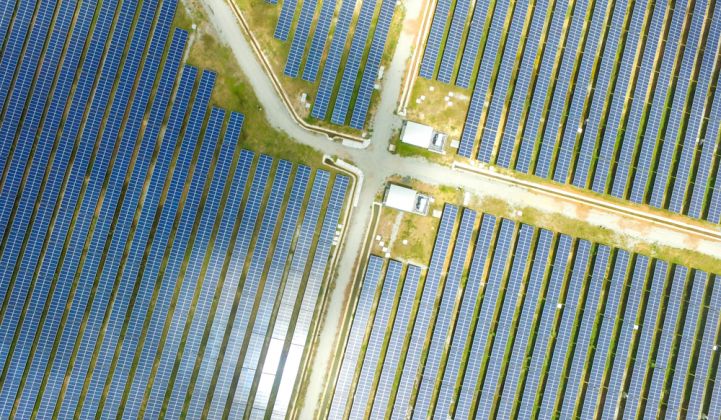Solar developers are relying on merchant sales to supplement their revenues as bids fall below a level that can be sustained through power-purchase agreements alone. Or at least that’s the view taken by analysts who can’t work out how the projects will survive otherwise.
Last week, for example, an auction in Portugal saw bids hit a worldwide record low of 14.76 euros (US$16.48) per megawatt-hour.
Such prices are not reflective of the true levelized cost of energy for utility-scale solar in Portugal, said Tom Heggarty, senior analyst at Wood Mackenzie Power & Renewables.
“We believe that bidders are planning to sell into the wholesale power market at the end of the 15-year contracts on offer, and as such they're making a bet on merchant pricing from years 16 to 30 of the asset's lifetime,” he said.
It’s a risky bet. Wood Mackenzie analysis suggests the Portuguese auction bidders would need to get wholesale power prices averaging at least €30 ($34) per megawatt-hour to get a positive equity internal rate of return (IRR).
To see a positive IRR-weighted average cost of capital spread, meanwhile, the wholesale price would have to be around €50 ($56). And all of this is with some pretty optimistic assumptions on the part of the analysts.
Heggarty said the analysis assumed projects would be built at a price of just €600 ($670) per kilowatt of installed capacity, at the low end of capital expenditure estimations for Portugal.
The calculations also assumed a capacity factor of around 24 percent, most likely only achievable using bifacial modules on single-axis trackers.
“Such bets clearly represent a significant risk due to the many uncertainties around forecasting wholesale power prices 15 to 30 years ahead,” Heggarty said.
By the time these projects reach the end of their PPAs, Portugal should be well on the way to 100 percent renewable power penetration, he said.
“We would expect to see significant daytime wholesale power price erosion, without a lot of build-out of energy storage,” said Heggarty.
Spreadsheet optimism
This level of spreadsheet optimism is not unique to Portugal, nor to the solar industry for that matter.
In a tweet last month, the vice president of development at U.S.-based Scale Microgrids claimed it was “apparently common practice” to bid on PPAs that produce negative net present values (NPVs) “with a ‘thesis’ for getting it positive later.”
He said a financier had told him that these bids were going forward because “it’s my team’s job to win deals and HQ has deployment targets.”
Bloomberg New Energy Finance's head of solar analysis, Jenny Chase, confirmed that seemingly negative NPV PPA bids had been seen “a lot” since the advent of renewable energy auctions.
Calculating the levelized cost of energy needed to match many auction results was “incredibly difficult with the assumptions we have from mainstream providers,” she said. “What you have to do [is] stretch those assumptions to really painful levels.”
In some cases, developers could be excused for making overly optimistic assumptions because they could reasonably rely on technology and maintenance cost reductions taking place before a project was commissioned.
This is a fair bet with rapidly evolving technologies such as offshore wind and was certainly the case with solar in the earlier stages of its evolution. But in recent years, levelized cost of energy reductions for solar have been tapering off.
Instead, the hope is that merchant sales will bulk out the figures once a project’s PPA expires. “No financiers will be actively looking for negative NPV,” asserted Heggarty.
“What we're seeing is that as assumed project lifetimes increase to 30 years and in some cases beyond, investors are seeing that they need less revenue from the contracts they're bidding on through auctions.”
And while that’s a big gamble, Chase said the potential downside has to be viewed in context. “By and large, what will happen is that the equity investors in the plant will not get quite what they were looking for,” she said.
“But if they end up getting 4 percent instead of 6 percent, it’s probably not the end of the world.”




